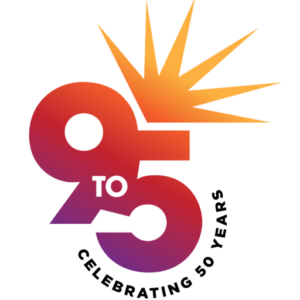
Job postings can tell you a lot about the position you’re applying for and what questions to ask when you land an interview. These questions and assessments are an opportunity to close the pay gap by shedding light on equity in the workplace. Performing a risk assessment on a potential new job can help achieve equal pay and be successful in a new role.
The wage gap for Black women compared to non-Hispanic white men is 67 cents for full-time, year-round workers and 64 cents for all workers (including part-time). Black women experience a wage gap at every education level, and the gap is largest for the most educated Black women. Black women have the highest student loan debt of any racial or ethnic group, but among doctorate degree holders, Black women typically make 60 percent of what their white, non-Hispanic male counterparts are paid. In addition to making less, Black women and other people of color are often set up on “the glass cliff”– or are promoted into leadership roles when a company is in crisis.
It’s also important to look for jobs that fit our values and needs as workers with complex identities– like moms, caregivers, people with disabilities, or LGBTQ workers. Evaluating job descriptions and asking the right questions can go a long way in finding the right companies to work for and being set up for success.
Before You Apply
- Look for a pay scale
Pay scales let you know a lot more than just how much you might make at a position, and they’re a step towards achieving equal pay. Pay transparency helps narrow the pay gap by providing a narrow window for negotiation and helps workers know if a position’s pay meets their expectations from the beginning. This also helps existing employees know how much they should be paid so they can negotiate if necessary.
When there is a salary range for a position the “gender differences in negotiation outcomes diminish, which could help narrow gender wage gaps.” They also force employers to review their compensation practices and address any existing gaps.
- Research
It’s pretty typical to browse the company website and social media to get a feel for the organization as a whole before applying to a company, but you can also spend time researching on websites like LinkedIn and GlassDoor to get a picture of who works there and what former employees are saying.
- Red Flags on Job Descriptions
Sometimes you can spot a bad work culture or disorganized workplace right in the job description and there’s lots of advice out there on how to evaluate a description and spot red flags. Here’s some advice that might help:
How to Spot Signs of a Toxic Culture in the Job Description
Red Flags to Look for in the Job Description
10 Job Posting Red Flags To Watch For
While You’re Interviewing
- Pay attention to communication
You’ll learn a lot about the company from the first messages you receive from them. If communication about the interview process is unclear, there might be more going on under the surface.
- Questions to ask
Interviewing the company is just as important as them interviewing you! Think of the interview process as an opportunity for you to get to know the workplace and its culture, environment, and communication styles. You can ask questions like:
How do you support workers in onboarding and beyond?
How are mistakes handled?
How is success measured?
How has the team resolved a conflict or a difficult situation in the past?
How do they communicate and lead people from different backgrounds?
What do they believe the role of a leader is?
What are the avenues for growth in this role?
3. Illegal Questions
Potential employers can’t ask a whole host of questions about you, including how much you made at your last job, ethnicity, if you’re pregnant or about your kids, age, marital status, disability, arrest record, and religion. Read more about the specifics here.
Here are some more red flags to look for during the interview process.
You’ve Been Offered the Job
Now that you’ve done the research and hopefully gotten to know to people and environment you’ll be working in, and received an offer it’s time to put all that information together and evaluate everything together.
If you’re given an employee handbook or copy of policies, spend time reading through the policies and making sure the job fits your needs. You can look for policies like sick time, vacation, paid leave, rules for performance evaluations, and others.
At this point, you can also negotiate for pay. Check out our blog for five tips to help you get the pay you deserve.

